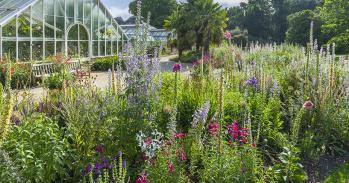
Conserving biodiversity must be considered when developing plans to reduce greenhouse gas emissions from deforestation, researchers warn in today’s edition of Science. Scientists support plan but urge initiatives to protect biodiversity.
Conserving biodiversity must be considered when developing plans to reduce greenhouse gas emissions from deforestation, researchers warn in today’s edition of Science. Scientists support plan but urge initiatives to protect biodiversity.
Land use change, mostly deforestation, accounts for 18-25% of global annual greenhouse gas emissions.
Dr Lera Miles
The United Nations Framework Convention on Climate Change is currently discussing ways of Reducing Emissions from Deforestation and Degradation (REDD) in developing countries. REDD has great potential to deliver benefits for biodiversity and people, as well as for the climate.
However, it is likely that these benefits will be concentrated in forests with high carbon stocks and that land use change may shift to low-carbon forests and other ecosystems important for biodiversity.
Dr Lera Miles, lead author and Acting Head of the Climate Change and Biodiversity Programme at the United Nations Environment Programme World Conservation Monitoring Centre (UNEP-WCMC), said: "Land use change, mostly deforestation, accounts for 18-25% of global annual greenhouse gas emissions. We support the initiative to conserve forests, which will help to address this growing problem as well as maintain valuable habitats; however, we are concerned about potential unintended negative impacts on some ecosystems.
"If forests are protected through REDD without addressing the underlying causes of forest clearance, such as increasing demand for food, then some clearance of natural ecosystems will simply shift to other areas and different habitats will be destroyed. "
Dr Miles and her colleague and co-author of the paper Dr Valerie Kapos, Visiting Fellow at the University of Cambridge and Senior Advisor at UNEP-WCMC, suggest that a shift in the focus of conservation investment may be needed to counteract these potential side effects of REDD. Increased conservation focus may be needed on forests with lower carbon density, which would be less valuable in carbon terms, but still rich in biodiversity, and on non-forest ecosystems such as savannahs, grasslands and wetlands, which would also be under increased pressure.
Dr Kapos said: "Currently, much conservation investment is focused on species-rich tropical forests. A successful REDD mechanism would direct far more funds to tropical forests than are currently available for biodiversity conservation. We suggest that in such a scenario, strategies for conservation investment will need urgent re-thinking.
"The climate change convention has agreed to a trial period for testing approaches to REDD, which presents an important opportunity to assess the magnitude of potential unintended impacts. Conservation scientists and practitioners need to assess the potential consequences of REDD for biodiversity, and to communicate clearly their findings. Decision-makers will need to take these findings into account as REDD evolves towards a global agreement."
This work is licensed under a Creative Commons Licence. If you use this content on your site please link back to this page.





